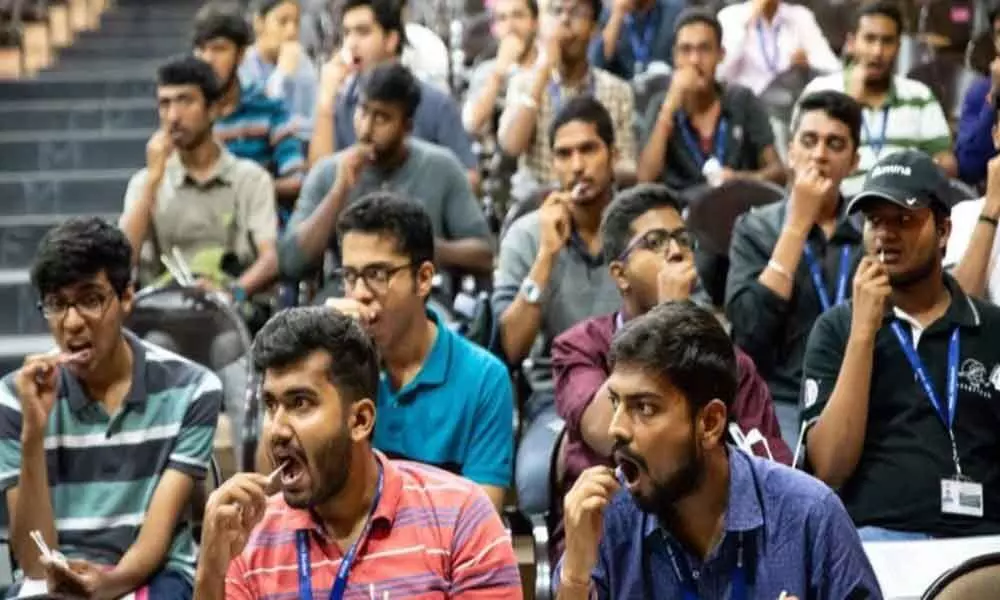Live
- Jan Aushadhi Kendras sees over Rs 1,255-cr sales of affordable medicines till Nov: PMO
- Govt pegs India’s GDP growth at 6.4 pc for 2024-25; agriculture bounces back, services surge
- Low-Calorie Foods To Eat In Winter For Fast Weight Loss
- Bulletproof Glass Installed at Salman Khan's Mumbai Home for Safety
- HMPV outbreak: No need to panic at this stage, say Maharashtra ministers
- Two associates of foreign-based gangster Prabhdeep held in Punjab
- Formula 1: Magnussen reflects on missed Ferrari and Red Bull chances
- Average affluent Indian managing over 434 peer-to-peer banking transactions annually
- Best Way to Eat Dry Fruits in Winter: Soaking vs. Roasting
- SC relief: Asaram Bapu gets interim bail on medical grounds, but will remain in jail
Just In
How Young India is fuelling the future of stem cell therapy


Severe Combined Immune Deficiency, Stem cell transplant treatment, Human Leukocyte Antigen, Leukemia
Eighteen-year-old Aisha Choudhary was just like any other adolescent – eyes filled with dreams and a heart brimming with energy. The only difference was she was battling a rare genetic disease, Severe Combined Immune Deficiency (SCID). Diagnosed when she was six months old and undergoing medical treatment for years, she was iron-willed in playing the cards she was dealt.
Since one of the most effective cures for SCID is a stem cell transplant (grafting of the parent cells from which all blood cells develop), Aisha's parents, Niren and Aditi, decided to opt for that treatment mode. But their cells were not a complete match with their daughter's, and they had to look at external donors. However, due to a low number of voluntary, registered stem cell donors, Aisha could not get a compatible donor whose genetic markers were a close enough match to hers. With no other alternative treatment available, Aisha had a bone marrow transplant. But, it came with a side-effect that cost her life — Pulmonary Fibrosis, a disease known to damage the lung tissues.
Aisha's journey has been captured in The Sky is Pink, a recent Bollywood movie starring Priyanka Chopra, Farhan Akhtar, Zaira Wasim, and Rohit Saraf. The 18-year-old's life story is mirrored in the experiences of many who await stem cell donation as treatment for blood-related illnesses like leukemia, lymphoma, and sickle cell anemia every year.
With very few individuals signing up as donors and the probability of finding a match being a dismal 0.0008 percent in India (against a lean 16 percent abroad), fatalities are mounting year on year. According to a report published by the US National Library of Medicine and National Institutes of Health, there are only three crore registered stem cell donors across the world, with Indian donors numbering 3.6 lakh. However, in recent times, there has been one small break in the clouds — a number of youngsters, non-governmental organisations, and medical professionals have come forward and are working to spread awareness about stem cell donation and motivate a larger number of people to register as donors.
How stem cell donations work The stem cells in a human body mainly comprise red blood cells, platelets, and white blood cells. These are found in the umbilical cord of newborns and in the peripheral or circulating blood and bone marrow. A stem cell donation is as simple and painless as a blood donation. Certain diseases like blood cancer and leukemia tend to destroy the bone marrow or affect its functioning. For these, treatments like chemotherapy and radiotherapy are tried initially.
However, in some cases, they do not prove effective for a cure. The only recourse then is replacing the patient's stem cells with those of a healthy person. One of the main criteria for a successful transplant is a good match between the stem cells of the donor and those of the patient. Therefore, a donor registry will administer a cheek swab test (tissue samples extracted from the cheek) on all potential donors to match cell characteristics. This procedure of pairing generic markers is called Human Leukocyte Antigen (HLA) in medical terms.
Each potential donor's tissue is entered in the registry and given an identification number after the test is done. If the registry finds a match at any point in time, the donor is contacted to initiate the transplant. There are several donor registries, in India and abroad, where people can sign up to donate their stem cells. The donor's consent is a pre-requisite before registration, which is sought through the filling out and signing of a form.
Source:yourstory.com

© 2024 Hyderabad Media House Limited/The Hans India. All rights reserved. Powered by hocalwire.com






